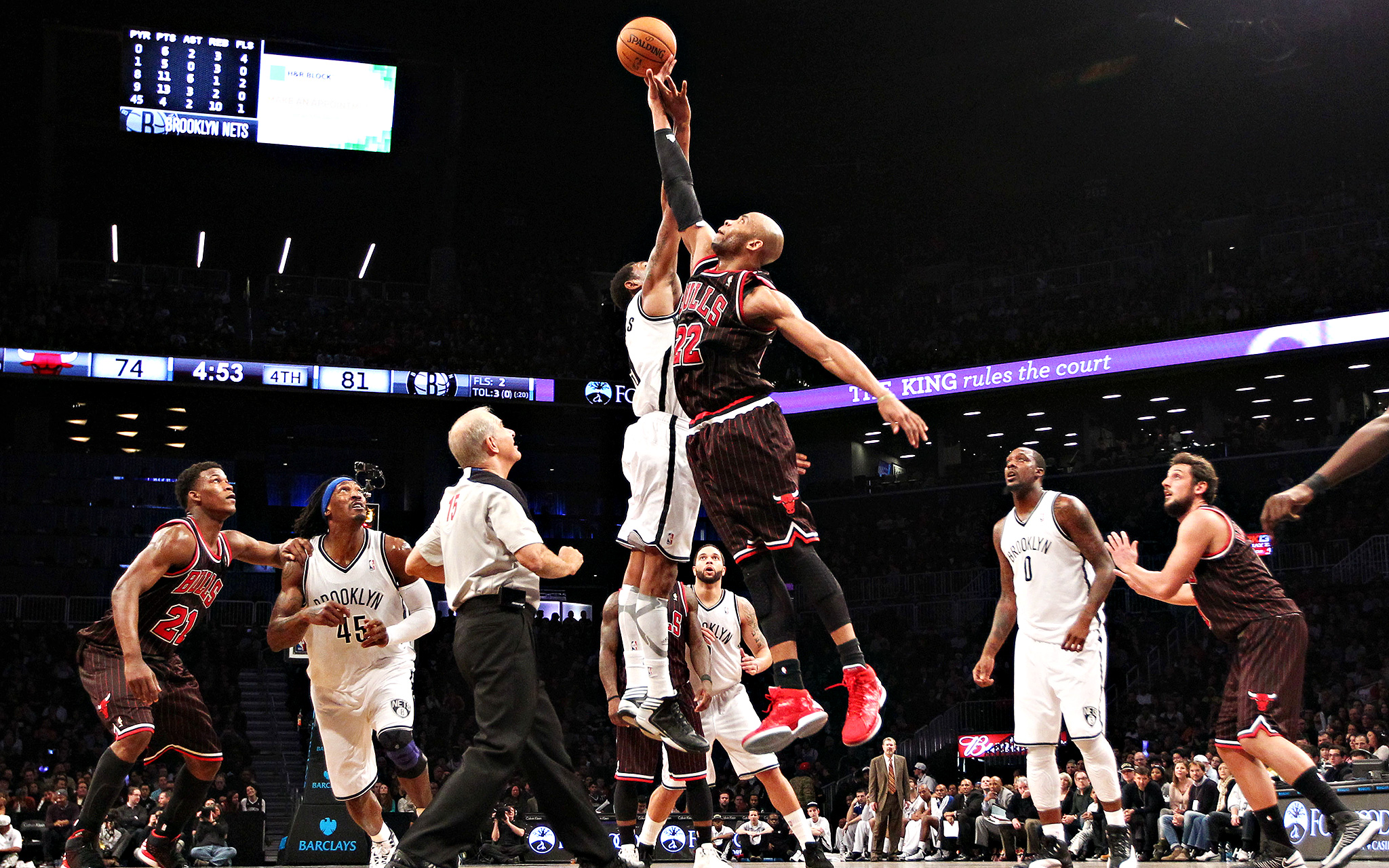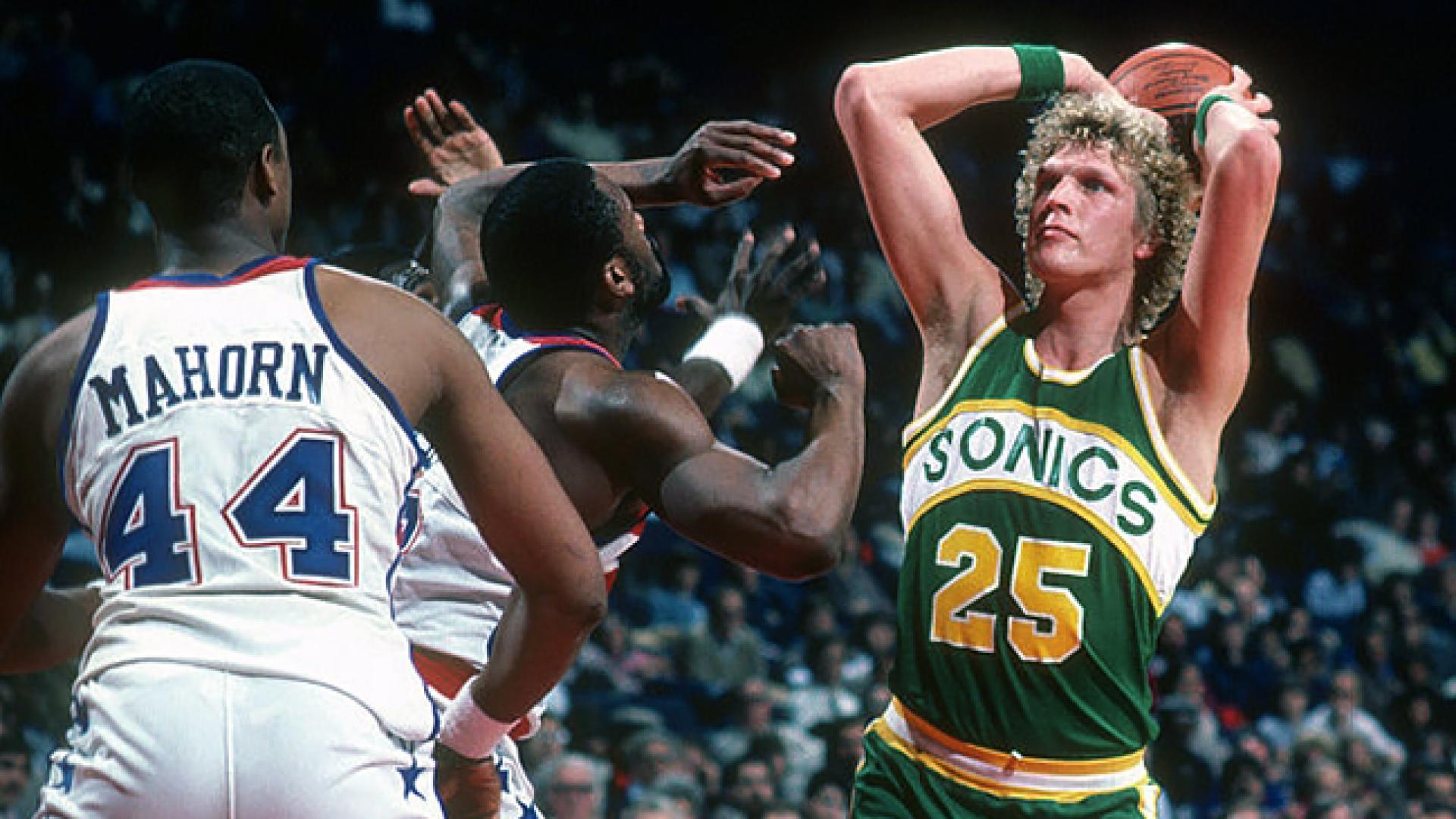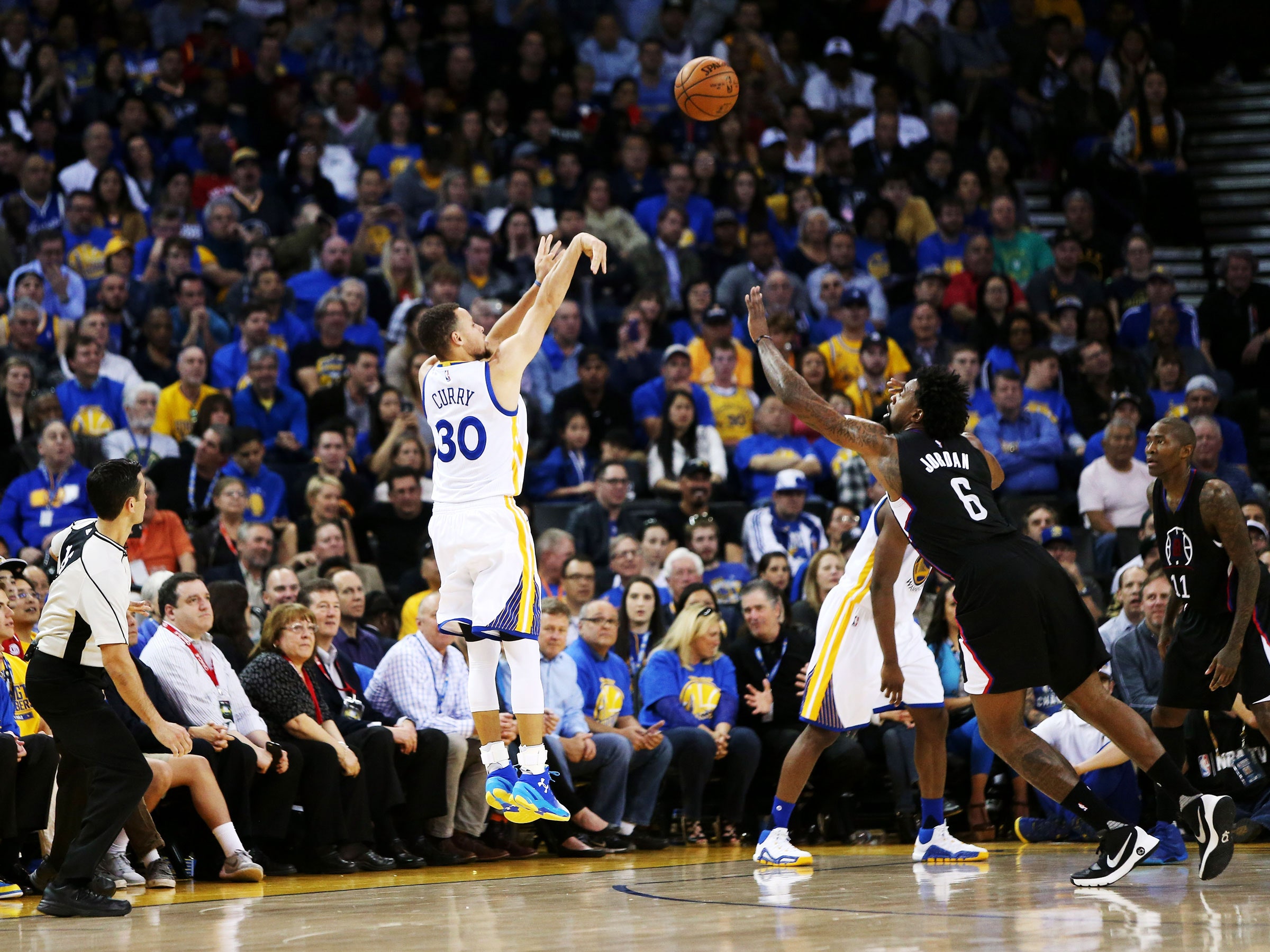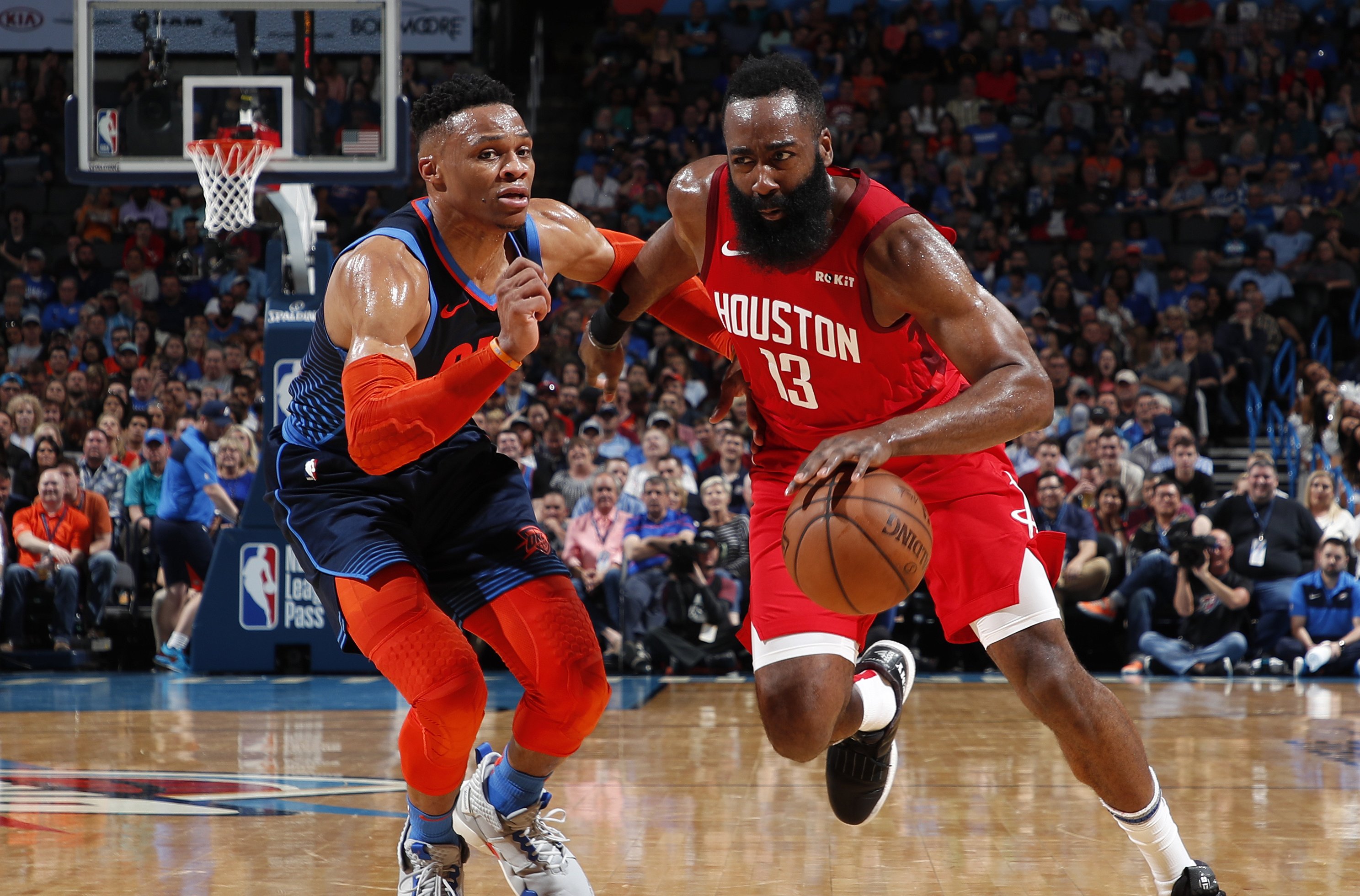
RULE NO. 6—PUTTING BALL IN PLAY—LIVE/DEAD BALL
Section V—Jump Balls in Center Circle
a. The ball shall be put into play in the center circle by a jump ball between any two opponents:
(1) At the start of the game
(2) At the start of each overtime period
(3) A double free-throw violation
(4) Double foul during a loose ball
(5) The ball becomes dead when neither team is in control and no field goal infraction is involved
(6) The ball comes to rest on the basket flange or becomes lodged between the basket ring and the backboard
(7) A double foul occurs as a result of a difference in opinion between officials
(8) A suspension of play occurs during a loose ball
(9) A fighting foul occurs during a loose ball
(10) The officials are in doubt as to which team last touched the ball before going out of bounds and the players cannot be identified.
b. In all cases above, the jump ball shall be between any two opponents in the game at that time. If injury, ejection, or disqualification makes it necessary for any player to be replaced, his substitute may not participate in the jump ball.
This is a good rule to understand for jump ball situations that occur at the center circle. Otherwise, all other jump balls will take place at the nearest circle.
Crew Chief stuff!!

RULE NO. 4—DEFINITIONS
Section XVIII—Fumble
A player who is holding the ball and fumbles it out of his control may recover the ball. If his pivot foot moves to recover the ball, he must then pass or shoot the ball. If he fumbles and recovers it without moving his pivot foot and before the ball touches the floor, he retains his status before the fumble.
If a dribbler ends the dribble and loses control of the basketball, the player may move the pivot foot to recover the ball. At that point, the player can only shoot or pass the ball. No pivoting.
Only if the ball doesn't touch the ground and the player has retained the same pivot, would the player be allowed to pivot with the same foot.
Crew Chief stuff!!







